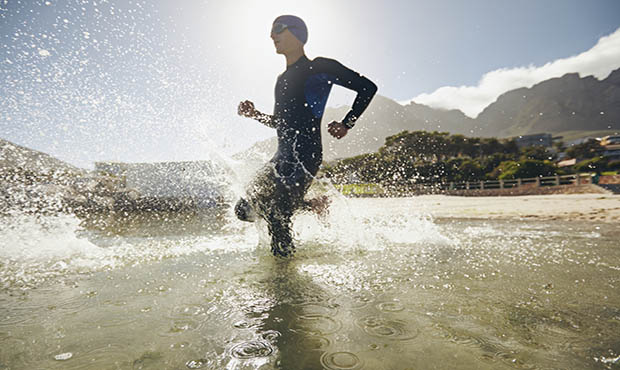
This article is part of an exclusive series available only to Active Advantage members. To read more tips and training advice from the world's top endurance athletes, visit Active Advantage and sign up for a 30-day trial for only 99 cents.
For triathletes, mistakes can define a race performance as much as success can. Luckily, most mistakes are not only avoidable, but also easy to remedy for anyone willing to look closely at few key areas. Avoiding these mistakes can dramatically improve performance.
Based on my experiences as a coach and an athlete, I've outlined my top five mistakes to avoid. I've made all of them during my career, so I know from personal experience they can all be corrected. If any apply to you, take heart.
1. Lack of Base Building
First and foremost, triathletes are endurance athletes. Any event that lasts over about four minutes starts to tap into your endurance physiology. In simple terms, this is your ability to access stored fat for fuel.
Even in a sprint or Olympic distance triathlon, your ability to sustain a high speed is determined by the size of your fat burning engine. To develop this aerobic physiology, you should initially slow your training pace down.
Motivating a triathlete is rarely a problem, but getting him or her to slow things down to develop their fat burning aerobic endurance engine can be tough.
Here is a simple way to figure out what heart rate represents the top end of your aerobic physiology: Take 180 and subtract your age. Now take that number and correct it based on the statements below:
- Subtract five beats if you are recovering from a major illness or injury that has kept you from training for six months or more.
- Leave the number where it is if you have been working out about two to three days per week for at least a year.
- Add five beats if you have been working out more than three days per week for at least a year.
- If you are over about 55 years old or under about 25 years old, add another 5 beats onto it.
This number is your maximum aerobic heart rate, meaning that if you train at or below this heart rate you are stimulating the aerobic fat burning engine. Training above it stimulates the development of your anaerobic physiology or your speed physiology.
Training aerobically is low stress on your body. Conversely, training anaerobically is high stress. Doing interval sessions requires more recovery time compared to completing a similar length workout at a lower intensity.
It can take a few months of really dialing your intensity back to see significant improvements in your pace and speed at or below your max aerobic heart rate. But in the end, this is what determines the size of your endurance engine.
Why is training too hard too frequently a mistake to avoid? High intensity anaerobic work (training above your max aerobic heart rate) raises the stress hormone levels in your body. A little of this type of work will indeed make you stronger and faster, but if every session is physiologically anaerobic, your body will not be able to handle the stress and your fitness and health will go in the wrong direction.
Consistent anaerobic training will suppress the immune system, increase your chances of getting sick, and end up inhibiting new protein synthesis, actually making you weaker over time. It also causes sleep problems, disrupting the deep stages of sleep your body needs to repair and rebuild itself from your training. Additionally it lowers overall energy levels leaving you lethargic—lowering training motivation to the point where you just don't want to go out there and exercise anymore.
I trained too hard, too often, during my first two years in the sport. Fortunately I was shown how to do most of my training aerobically, and then I sprinkled in just enough speed work so the balance of aerobic and anaerobic development was correct. I went from being burned out to feeling strong, from having small injuries to having none and from having unpredictable results in races to consistently putting in the performances I felt I was trained to do.
2. Lack of Sleep
When you sleep, your body releases human growth hormone based on your training stimulation during the day. HGH tells your body to build new muscle and to repair any micro damage that occurs during your training sessions.
With chronic lack of sleep, your body stops releasing enough HGH to repair itself effectively, and you can end up overeating because the hormone that shuts off your appetite when you have taken in enough calories is suppressed. Also, without enough good quality sleep your body gets stuck in a state of continual stress and ends up slowing or even completely inhibiting your ability to develop your aerobic fat burning engine.
This played out for me the first year after my son was born. Like most infants, he woke up several times at night and I didn't get enough good quality sleep.
Normally my pace increases throughout every season as I build my aerobic base, and I eventually add in some speed work. That year my pace never got any faster at any heart rate from the beginning of the season to the end simply because I was sleep deprived. If you are new to training and triathlon, do your best to plan in some additional sleep from what you normally get so that your body can repair itself and become stronger, faster and leaner.


